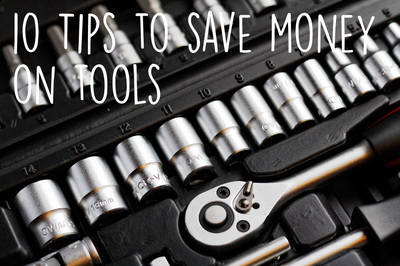|
Disclaimer: “Sandblasting” is actually illegal- using silica sand as a blasting media has been banned in the UK for over 10 years now (because it causes a horrific lung disease) as well as in many other European countries. “Abrasive blasting” or just “blasting” is the correct term, but I use “sandblasting” here at times because it’s still commonly used to refer to “abrasive blasting”. In short- please do not blast with sand, it's dangerous and illegal. With that out of the way let’s discuss “abrasive blasting” or whatever you want to call it. Blasting all the shizz off your car- should you do it and what’s involved? Do You Really Need to Sandblast your Resto Project?There are many benefits to blasting your project and it’s probably the best way to fully restore a car. Blasting off all the old paint, rot, filler and whatever else is lurking on the bodywork will let you see what’s actually there and give you a good base to start with. Blasting is also faster and less effort than stripping back the bodywork by hand, even if you’re using a grinder. And if you’re thinking about the resale value you can advertise the vehicle as having a “full bare metal resto” and get a few extra pennies when you come to sell. But when you take on a restoration project things can get expensive quickly and not all project cars need sandblasting. If you’re on a budget have a think about whether you really need to get the car blasted. It’s worth doing if you think there’s likely to be hidden rot, especially if it’s an older (pre 1980s) car that you’ve chosen to restore... but if the car looks pretty straightforward (as in, you can obviously see the work that needs doing and it hasn’t been tarted up) you might not need to bother and could just get stuck into chopping out and welding up the bits you can see. If you want to get the shell of your car blasted you'll need to make that decision right at the start of the project. But remember that easily removable parts, like bumpers, wheels and some panels can always be taken off to blast and paint at a later date. Blasting the Car YourselfI love it when people have a go at stuff themselves- encouraging people to get informed about and working on their own cars is one of the main aims of this blog! But be warned that blasting a car is not an easy task. It’s messy, it’s loud and if you don’t know what you’re doing it can go very wrong. As the purpose of abrasive blasting is to give yourself a good base to start with messing it up will make your job ten times harder (when you're spending hours banging out dents) and could even ruin the whole restoration (if you damage an irreplaceable panel or part). I’ll go through a little bit about what’s involved in blasting a car yourself and you can decide if you’re up to the challenge. First of all, as I mentioned before, you need to be aware that blasting is messy and loud so you’ll want to have access to a large, sealed, isolated area that you're allowed to get into a state- an empty barn would be ideal, a small garage in a built up area, not so much. You could do the blasting outside, which would hypothetically save a lot of time on cleaning up but I don't really think the UK has the best climate for that and again it would need to be a pretty deserted area. EquipmentIf you want to do it yourself there’s a lot of upfront costs in equipment. A quick online search tells me you can buy a “sandblast kit” for as little as £20- but to be honest it would most likely be a waste of £20. To do the job right you need decent equipment or it will be very time consuming (feel free to prove me wrong- buy the £20 kit and let me know how it goes!) Here's the basic set up you’ll need for (proper) blasting:
Hiring Someone to Blast the Car for YouIf you’ve read over what’s involved with blasting the car yourself and have decided against it (no judgment here) you’ll be glad to know there’s plenty of companies out there offering blasting services. When looking to hire someone to blast your car these are the sort of questions you should think about asking them:
If budget is an issue (and when isn’t it?!) discuss how you can make the job easier for them and cheaper for you by stripping down the vehicle yourself, for example removing the windows and engine to give them easier access and get a proper job done. Removing any underseal yourself by hand with a needle gun and/or scraper, although a massive pain, will also make the job much quicker (and you should run from any professional blaster who tries to tell you otherwise). ConclusionBlasting your car will definitely benefit your project in the long run. Whether you want to do it yourself or hire someone else depends on how “hands on” you want to be with the project. If money is an issue you might want to reconsider going it alone as you could actually end up spending more on a decent set up to blast the car yourself properly than you would on paying someone else to do it for you. That being said, if you want to get into car restoration and think you’ll have lots of use for it the equipment could be a good investment. For me personally I’m happy to let other more qualified people do the blasting, for now anyway. Got an opinion? Let us know in the comments You May Also Like...
Comments are closed.
|
watch our new youtube channelOur blog delivers brutally honest advice for the “rotbox” in your life with the aim of raising the standard of car projects everywhere.
Practical, direct, actionable ideas and zero bull. Read on. About
|
AboutWe're a dedicated, independent fabrication company based in rural North Yorkshire that specialises in light general fabrication work including CNC plasma cutting and CNC sheet metal bending.
|








